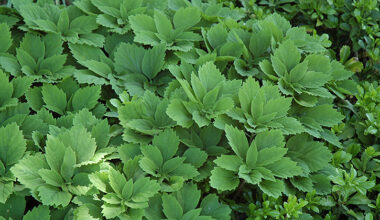If you bought your green plants from a florist who has already prepared the pots according to the rules, you can skip the repotting step until next year, or even the year after.
On the other hand, if you have purchased plants in a small plastic pot, it may be worthwhile to ask yourself the question of repotting!
Contents
The advantages of plastic pots
Before we talk about clay pots, it is pertinent to outline the advantages of plastic pots – because there are several.
If you have multiple crops to move, or if the pots are large (I’m thinking of lemon trees, olive trees, etc.) the weight of plastic is a real advantage. Also, it will be much more impact and cold tolerant than terra cotta.
One of the advantages – which for me is a disadvantage – is that the plastic pot retains moisture and heat, and thus can support a longer growing period. It is also less expensive.
Finally, plastic pots can come in a variety of shapes and colors, to more easily match your decor, and spice up a patio or balcony.
The advantages of clay pots
As far as I’m concerned, I see a major advantage to terra cotta pots, which is the reason why I repot all my indoor plants: the terra cotta pot lets the roots breathe.
This way, your soil never stays too wet, and the roots of your plants will be healthier. As a direct consequence, they will grow much better. You will have to water more, since porous terra cotta induces more evaporation.
If you use it outside, it protects better from the cold, because it is thicker. However, its major disadvantage is that it can crack with frost, or when you handle it.
Finally, the weight of terracotta pots can be an obstacle for large plantations, especially in apartments.
Should I repot my plants in a plastic pot?
The terracotta pot is mainly used for its porous wall which favors the aeration of the soil. The substrate dries three times faster than in a plastic pot. The weight of the stoneware stabilizes the pot and makes it less likely to tip over.
Some glazed stoneware pots also offer beautiful colors. However, the glaze removes the porosity of the stoneware. Stoneware pots that have never been used should be soaked in water for eight to twelve hours before use.
Beyond a question of aesthetics, it can therefore be useful to repot plants in plastic pots to clay pots, here is how to proceed:
How to repot your plants into a new pot?
Get a terracotta pot one or two sizes larger, a bag of clay balls and a bag of “special green plant” potting soil, and repot! To do this, water your plant thoroughly under room temperature tap water, then let the water run off into the sink. Meanwhile, place your new pot on the kitchen counter.
Start by spreading a 1-inch layer of clay balls to help with drainage, then add potting soil by digging a hole in the center with a tablespoon. Grab the plant by the stem at soil level and pull it out of its plastic pot, then pull a few roots out of the soaked root ball. Place it in the hole, gently press it in, add a little soil to fill in the holes, and there you have it! Easy, isn’t it?
When should you repot your plant in a new pot?
The ideal time to repot houseplants is at the beginning of the annual vegetative period, i.e. at the beginning of spring, as soon as the new shoots appear. Avoid repotting during the resting period, which for most plants is from October to January.
If the roots come out of the pot, the plants capsize under their weight or a plant that needs to be watered two or three times more often than usual, it is time to repot your plant. Examining the roots is still the best way to confirm the diagnosis. Treat diseased plants before transplanting to avoid a potentially fatal blow.
By removing the plant and observing the roots you will know that it is time to repot if they form a compact mass. Re-potting is not necessary if the potting soil comes off easily and few roots appear around the root ball. In this case, wait a few more months before repotting.









